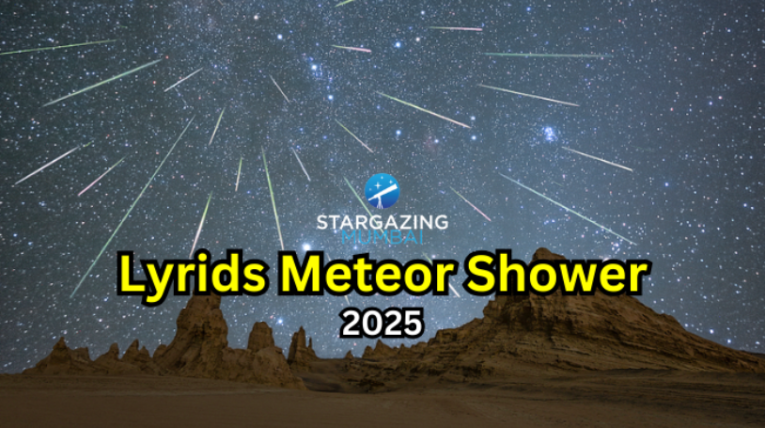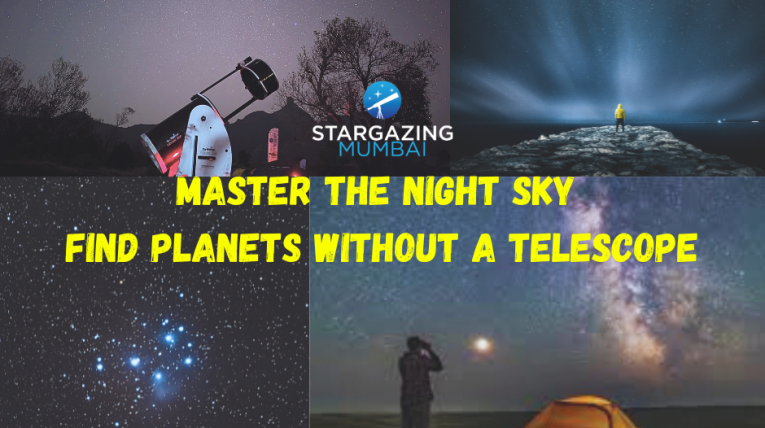Are you a fan of dramatic climaxes, or do you love seeing fireworks? If so, then you might be interested in supernovae – the ultimate spectacle in the cosmic theatre and the largest firework ever seen by mankind. Welcome to Supernova 101, where we’ll cover everything from S to A.
These celestial explosions, born from the fiery deaths of massive stars, illuminate the vast expanse of space with a brilliance that rivals the radiance of a thousand suns. Join us as we unravel the mysteries of these celestial fireworks, diving deep into their origins, their impact on the universe, and the profound insights they offer into the workings of the cosmos.
What Is a Supernova?
Before we delve into the cosmic fireworks of supernovae, it’s essential to grasp the concept that, much like humans, stars also have their life cycle. Just as we journey from birth to maturity and eventually to our twilight years, stars undergo a remarkable evolution from birth to death, each stage shaping their destiny and leaving a distinct mark on the universe.
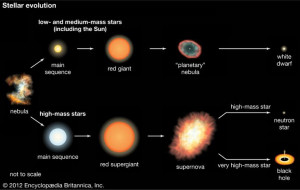
Want to learn more about how stars are born, live, and die? Our blog on Stellar Evolution has all the answers you need!
A supernova is a powerful explosion of a star that occurs during its final evolutionary stages. It can also happen when a white dwarf is triggered into runaway nuclear fusion.
The explosion is so powerful and bright that it can outshine its host galaxy and thus be visible to the naked eye.
Are you curious about the early observations of supernovas? Check this post for more details.
As a fellow human pondering the mysteries of the cosmos, it’s natural to contemplate the fate of our star, the Sun. After all, it serves as our celestial anchor, illuminating our days and nurturing life on Earth. But, like all stars, the Sun follows a path laid out by the laws of nature. Questions inevitably arise: Will it succumb to the fate of a supernova? And if so, when might this cosmic finale occur?
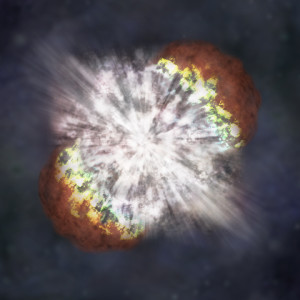
credit: NASA/CXC/M.Weiss
These queries prompt us to explore the intricacies of stellar evolution and the lifecycle of stars. While the Sun is currently a stable and radiant main-sequence star, its destiny holds an inevitable transformation.
But fear not—the Sun, unlike its more massive counterparts, is not destined to end its days in a cataclysmic supernova event. Instead, as it exhausts its nuclear fuel over billions of years, the Sun will gradually swell into a red giant, enveloping the inner planets, including Earth, in its expanding atmosphere. Ultimately, it will shed its outer layers, leaving behind a dense core known as a white dwarf.
So, while the Sun’s fate may not involve a dazzling supernova display, its journey remains a captivating tale of cosmic evolution—one that continues to shape our understanding of the universe and our place within it.
Fun fact alert!! Our ancestors predetermined the death of the sun without any modern equipment. Intrigued? Discover the predicted fate of our Sun. Click here to explore more.
What Causes a Supernova?
One type is triggered by the ‘last hurrah’ of a dying massive star. Picture this: a star, at least five times the mass of our sun, reaching its final moments in a spectacular blaze of glory.
Massive stars are cosmic powerhouses, burning enormous amounts of nuclear fuel at their cores. This process generates staggering amounts of energy, heating the star’s core to extreme temperatures. Surprisingly, even though our sun’s surface temperature reaches 6,000 degrees Celsius, its atmosphere extends to over a million degrees!
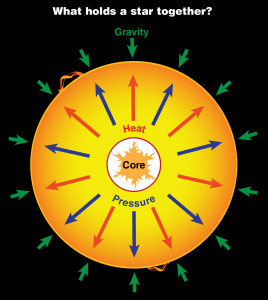
Curious about the sun’s mysterious behaviour that defies all logic? Click here to read more.
This intense heat generates immense pressure, which counteracts the force of gravity, preventing the star from collapsing under its weight. Essentially, a star is locked in a delicate dance between two opposing forces: gravity, which strives to compress the star into a compact mass, and the outward pressure generated by nuclear fusion, which pushes back against gravity’s pull.
When a massive star exhausts its nuclear fuel, it begins to cool off, leading to a drop in pressure at its core. In a cosmic showdown between gravity and pressure, gravity emerges victorious, and the star undergoes a sudden and catastrophic collapse. Imagine this: a mass one million times that of Earth collapsing in just 15 seconds—a breathtaking spectacle of cosmic proportions!
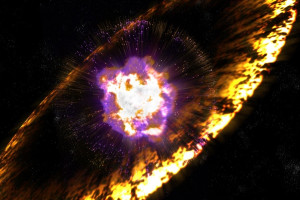
This rapid collapse generates immense shock waves that reverberate through the star’s outer layers, triggering a colossal explosion. In an awe-inspiring display of cosmic power, the outer part of the star is violently expelled into space, giving rise to the dazzling phenomenon we know as a supernova.
In the blink of an eye, a once-mighty star meets its spectacular end, leaving behind a legacy that echoes across the cosmos.
Another form of supernova occurs within binary star systems, where two stars orbit each other, and at least one is an Earth-sized white dwarf. White dwarfs are remnants of stars the size of our Sun that have depleted their fuel. When one white dwarf collides with another or accretes too much material from its companion star, it can undergo a catastrophic explosion. Kaboom!
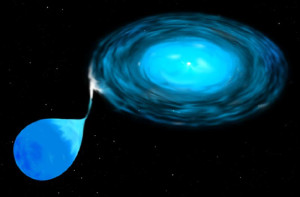
credit: STScI
Curious about the mesmerizing journey of a supernova’s explosion, from the star’s slow decline to its brilliant finale? Watch the full video here!
Types of Supernova
After having understood the two mechanisms by which supernovae occur, Let us take a look at the types of supernovae. Supernovae are mainly classified into three types: Type I, Type II, and Type III Supernovae. Each supernova possesses its distinct characteristics due to differences in the stars that precede them and the mechanisms driving their explosions.
These variations give rise to distinct types of supernovae, each with its own set of observable features and spectral signatures. By exploring these differences, we gain valuable insights into the processes governing the life and death of stars.
This deeper understanding goes beyond mere classification, providing essential knowledge about the fundamental dynamics of stellar evolution and its broader implications for the cosmos.
Type I – No Hydrogen Supernova
Type I supernovae are identified by the lack of hydrogen in their spectral signatures. However, the stars responsible for producing the various subtypes of Type I supernovae exhibit differences.
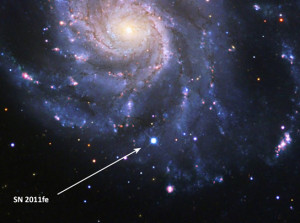
Type Ia supernovae originate from binary star systems, where a carbon-oxygen white dwarf accretes matter from a companion star. Once the white dwarf accumulates enough material, reaching approximately 1.4 times the mass of the Sun (also known as Chandrasekhar limit), it undergoes a cataclysmic collapse. These supernovae serve as crucial cosmic distance indicators due to their consistent peak brightness.
The spectra of Type Ia supernovae typically exhibit minimal or no hydrogen signatures and an abundance of carbon, along with silicon, calcium, and iron.
An example of a Type Ia supernova is SN 2011fe, which exploded in the Pinwheel Galaxy in 2011. This event, located just 23 million light-years away, stands out as one of the closest and most extensively observed Type Ia supernovae to date.
Confused about the nomenclature of supernovae? Click here to get a brief idea about the nomenclature.
Type II- Supernova
A Type II supernova, or SNII, occurs as a result of the rapid collapse and violent explosion of a red supergiant. For a star to undergo this type of explosion, it must possess a mass of at least eight times, but no more than 40 to 50 times, that of the Sun (M☉).
Type II supernovae stand out from other types due to the detection of hydrogen in their spectra. They are typically observed in the spiral arms of galaxies and in H II regions, but are notably absent in elliptical galaxies. The latter are primarily composed of older, low-mass stars, with few of the young, very massive stars necessary to trigger a supernova event.
When it comes to spiral arms in galaxies, don’t miss out on our post about the Summer Triangle! It’s a helpful tool for locating the spiral arms of the Milky Way.
Type III – Electron Capture Supernova
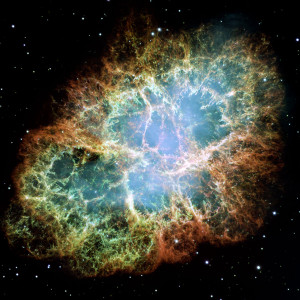
Credits: NASA/ESA/HUBBLE
Within the vast expanse of starry galaxies, astronomers have identified two primary types of supernovae. However, neither of these supernovae fully accounts for an extraordinary event that unfolded nearly a millennium ago. In the summer of 1054, Chinese astronomers documented the emergence of a star that blazed with such intensity that it was visible even in daylight, casting its luminance for a remarkable 23 days. This astronomical phenomenon, now designated as SN 1054, marked the occurrence of a supernova, with its aftermath giving rise to what we now know as the Crab Nebula.
Electron-capture supernovae occur when stars within a slim range in size—eight to ten solar masses—explode. The immense internal pressures compel electrons to merge with atomic nuclei as the star’s core depletes its fuel. Normally, the electrons would repel each other. But when they combine, the pressure inside the star drops, causing the star’s core to collapse. The collapsed core sets off an explosion, leaving behind a neutron star heftier than the sun.
Click here! To know more about this new type of Supernova
Observe Supernova From Earth
After learning all about supernovae, you might be wondering, why scientists even bother to study these explosions that happen so far away. Well, it’s a fair question!
Even though it happen way out in space, they’re super important for us to study here on Earth. Let me break it down for you.
First off, when we look at supernovae from Earth, they give us a special chance to learn more about these cosmic fireworks. Even though they’re far away, they shine really brightly, and we can catch their light with telescopes. By studying this light and other stuff they throw out, like radiation, we can figure out loads of cool stuff. Like, what kinds of stars exploded to make them, and what exactly happened during the explosion.
But it’s not just about learning fun facts! Understanding supernovae helps us understand the universe better. They’re like signposts in space, helping us map out how galaxies are spread out and how the universe is growing. Plus, they give us clues about dark energy, which is this mysterious force that’s speeding up the expansion of the universe.
And hey, there’s a practical side too. While the chances of a supernova going off close to Earth are pretty low, studying them can help us prepare for the unexpected. We can learn about stuff like or what happens to cosmic rays when they hit Earth.
Speaking of supernovae occurring close to Earth, let’s talk about Betelgeuse. Located in the constellation Orion, Betelgeuse shines as one of the brightest stars in our night sky. It’s so massive that if it were positioned where our Sun is, it would engulf everything up to the orbit of Mars!
Astronomers have suggested that Betelgeuse might go supernova in the foreseeable future, but in cosmic terms, ‘soon’ could mean any time from now to the next 100,000 years. However, recent observations indicate that this explosive event might happen sooner, possibly within the next tens of years.
On the other hand, we have Antares, known as the heart of the Scorpius constellation. It’s a red supergiant star, meaning it’s much larger and cooler than our Sun. In fact, Antares is so massive that if you put it in the center of our solar system, its surface would extend beyond the orbit of Mars! Like Betelgeuse, it’s also a potential candidate for a supernova explosion, though we’re talking cosmic timescales here, so don’t expect it to happen tomorrow.
So, even though supernovae might seem like distant fireworks, they’re super important for us right here on Earth. They’re like cosmic messengers, teaching us about the past, present, and future of the universe. And who knows what else we’ll uncover as we keep exploring!
Trouble identifying Antares or Betelgeuse? No telescope at hand? Light pollution ruining your view? No problem, we’ve got the answer! Join us on our next stargazing adventure! Click here for more details and to reserve your spot.
In the grand finale, let’s remember the fate of a supernova: after the fiery explosion fades, it leaves behind remarkable remnants. Some become beautiful nebulae, swirling clouds of gas and dust where new stars may one day form. Others collapse into incredibly dense neutron stars, or in the case of the most massive stars, transform into enigmatic black holes, where gravity is so strong that even light cannot escape.
As we contemplate these cosmic phenomena, let’s remain in awe of the universe’s majesty, inspired by its mysteries, and intrigued by the endless possibilities waiting to be discovered among the stars.
Join our Discord channel to stay updated on all the latest astronomical events and discussions! Feel free to ask any queries related to astronomy—we’re here to help you explore the wonders of the cosmos.
Enjoyed reading this? Consider reading:
- Stellar Evolution: 4 Incredible Stages from Formation to Final Collapse
- 8 Types of Stars and Their Spectral Classification That You Must Know
- Top 5 High Energy Objects in the Universe. Supernova, black hole, Active Galactic Nuclei (AGN)
- Top 10 winter deep Sky Objects you can see from near Mumbai

